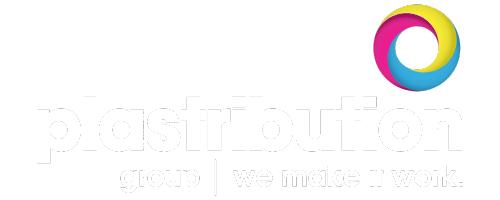Label Insights: The Evolution of Packaging Labels
In today’s fast-paced consumer environment, where attention spans are shorter than ever, grabbing a consumer’s attention in a second or less has become the ultimate goal.

In the world of consumer products, packaging labels are not merely functional; they’re a fundamental aspect of a product’s identity. These labels serve a dual purpose: they carry the brand’s visual identity and provide essential information about the product. But in today’s fast-paced consumer environment, where attention spans are shorter than ever, grabbing a consumer’s attention in a second or less has become the ultimate goal.
Grabbing Consumer Attention in a Second or Less
The first challenge that packaging labels must overcome is the ever-decreasing window of opportunity to make a first impression. Studies have shown that consumers, at least initially, spend a mere second or less when evaluating a product. In that brief moment, a label must captivate and persuade. It’s all about creating that instant connection.
Brand Loyalty as a Key Selling Feature
Once the consumer’s attention is captured, brand identification becomes the next crucial factor. The label must convey the brand’s personality and values. Brand loyalty is a powerful selling feature, and ensuring that consumers can instantly recognize a brand is critical to maintaining market share.
The importance of labelling is not a new concept; it has evolved over millennia. The need to mark containers with information about their contents dates back thousands of years. It became more significant with the rise of packaging for alcohol, and ‘modern’ labels, as we know them today, can be traced back to the 17th century.
Medicine vials were among the first to be fully covered with labels, followed by the labelling of medicine and alcohol bottles in the mid-18th century. In the UK, beer bottle labelling became common in the mid-19th century.

The Evolution of Label Design
The late 18th-century invention of the lithograph opened the door to mass-produced labels with more intricate designs and colours. These elaborate designs, sometimes created by commissioned famous artists, were meant to convey the quality and attributes of the product. The design and application of labels on a container are critical because labels impart an image of the product. This desire for differentiation has driven packaging designers toward more elaborate container designs and label features, such as tactile and metallized coatings.
Labels that adhere to the surface of a container, like pressure-sensitive labels, are most suitable for rigid containers with straight sides where little or no form-fitting is required. However, stick-on labels do not provide the same 360-degree experience as shrink sleeves, which have gained popularity for their ability to communicate effectively with consumers.
The Rise of Shrink Sleeve Labels
Shrink sleeve labels have become increasingly popular in recent years, especially for PET bottles. These labels offer numerous benefits, including clarity, strength, chemical resistance, print quality, gauge stability, and the ability to conform to complex container designs. Their high clarity and low colour interference make them ideal for high-quality printing.
Moreover, full-body shrink sleeves effectively block light and UV, masking the greyish appearance of PET when post-consumer recyclate is used. Additionally, they can incorporate tamper-evident features by extending over the closure.
Challenges in Label Recycling
While shrink sleeve labels have gained prominence in the world of packaging, they present unique challenges in recycling. The separation of labels from bottles during the recycling process has been a significant hurdle. In response to this issue, the Full-Wrap Label Consortium was established in 2012, involving up to 50 organizations across the supply chain. The consortium explored innovative solutions, including perforated labels for easy removal, coatings that allow labels to float and separate from bottles during the wash step, and de-seaming label adhesives.
Other options considered were the removal of labels at materials recovery facilities and the introduction of “zip-off” labels that consumers could easily tear off. One real-world example of the latter is the Chobani yogurt cups in the United States.

A Sustainable Solution: Crystallisable PETG Films
Amid the increasing scrutiny on plastics and packaging waste, recycling PET bottles has become a paramount goal. Efficient label removal is central to achieving high-quality post-consumer recyclate. To address this challenge, one promising option is the use of crystallisable PETG films for labels.
These films offer an innovative solution by allowing labels to be recycled with PET bottles without compromising the quality of the recovered PET. The higher crystallinity of crystallisable PETG films prevents the clumping of PET flakes, a common issue during recycling with traditional PETG sleeves. The film still contains a portion of glycol modification, enabling it to shrink to the same degree as standard PETG film.
Crystallisable PETG films can shrink as much as 70 to 80 percent in the traverse direction at temperatures of 85 degrees Celsius. The most significant advantage is that they can be readily recycled in the PET stream, streamlining the recycling process, increasing rPET yield, and reducing waste.
Addressing Ink Removal for Clarity
Apart from the label material, the removal of printing inks is also crucial to achieving clearer PET bottle flakes, particularly when aiming for high post-consumer recycled content. An Association of Plastic Recyclers-recognized washable ink system can be employed to ensure that the ink is efficiently removed during the recycling process.
In conclusion, packaging labels have come a long way in their evolution, from their historical origins to their current role in captivating consumers’ attention. The rise of shrink sleeve labels offers both opportunities and challenges in the realm of packaging and recycling. The adoption of sustainable materials like crystallisable PETG films and innovative ink removal systems paves the way for a more environmentally friendly and efficient recycling process. These advancements are crucial in the ongoing journey to reduce plastic waste and promote a circular economy.
